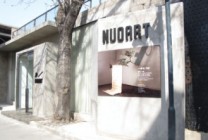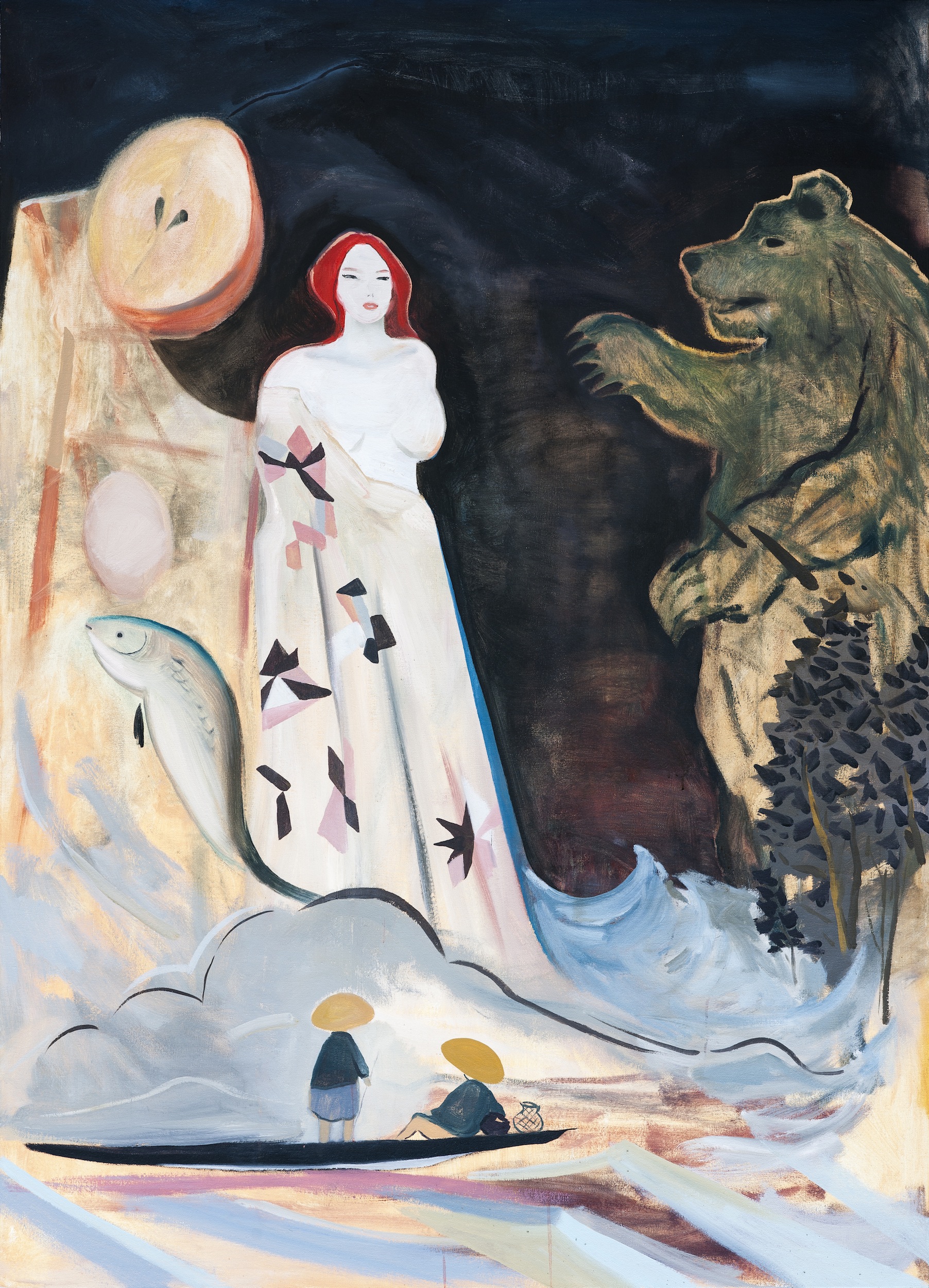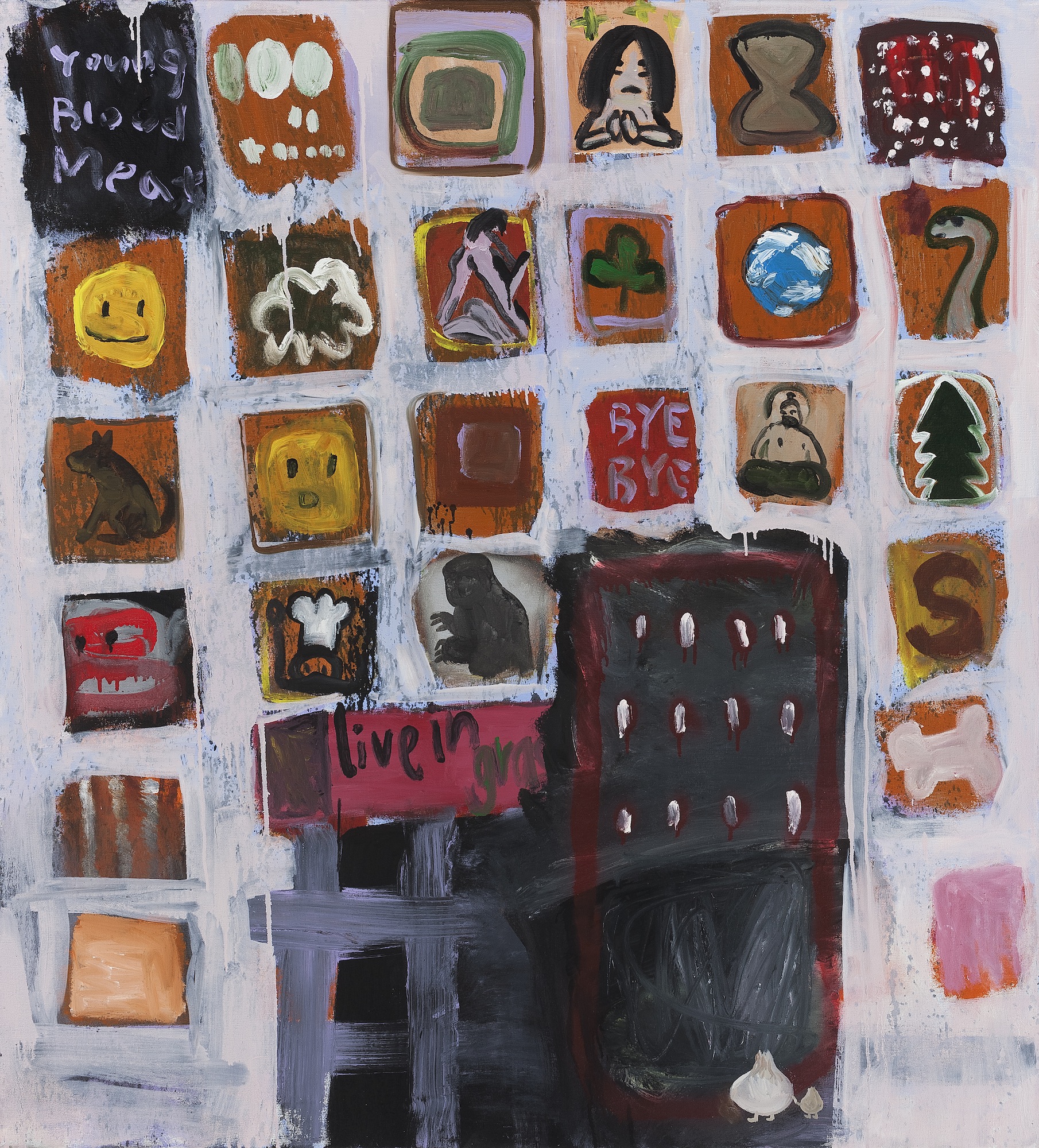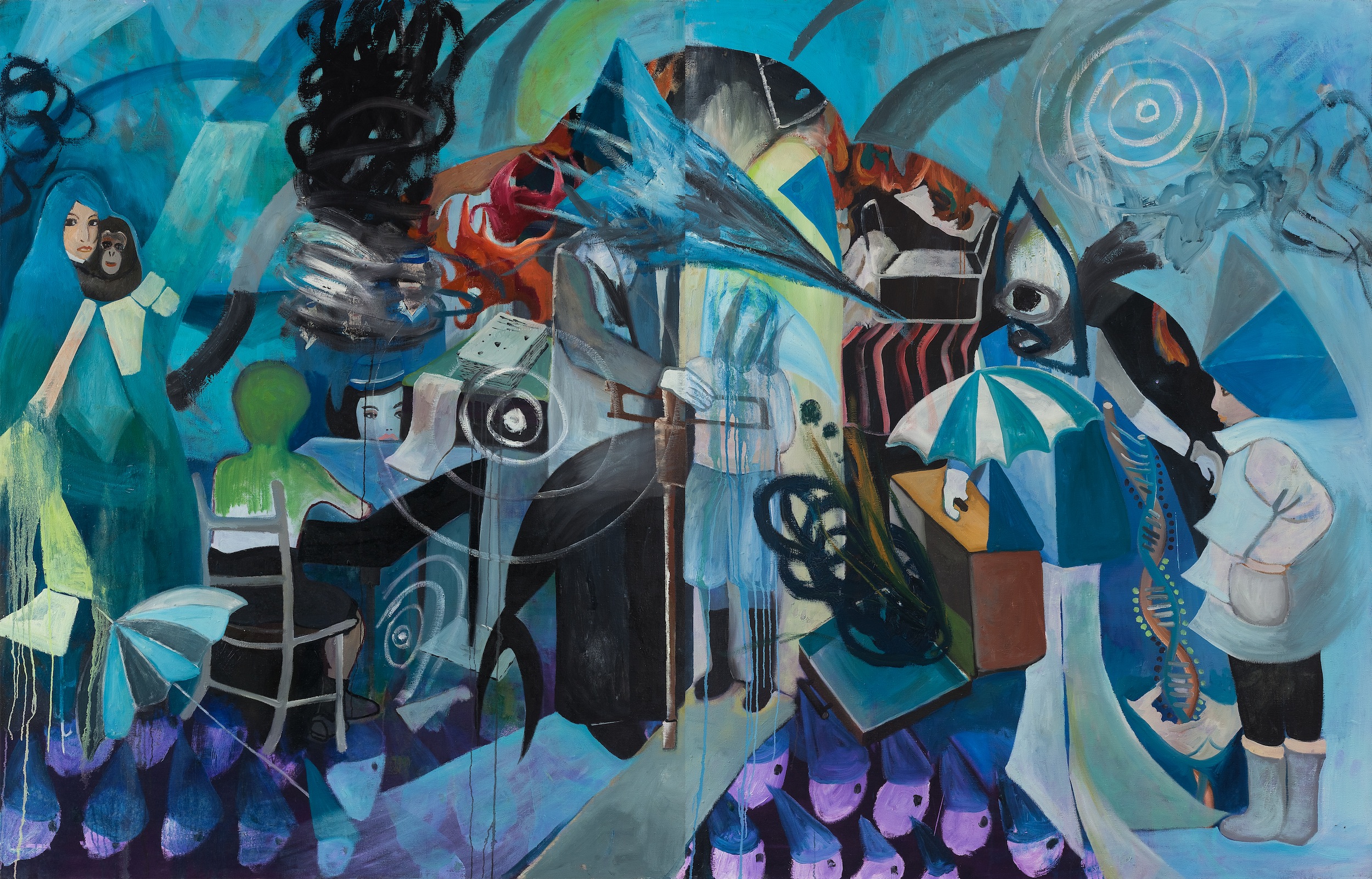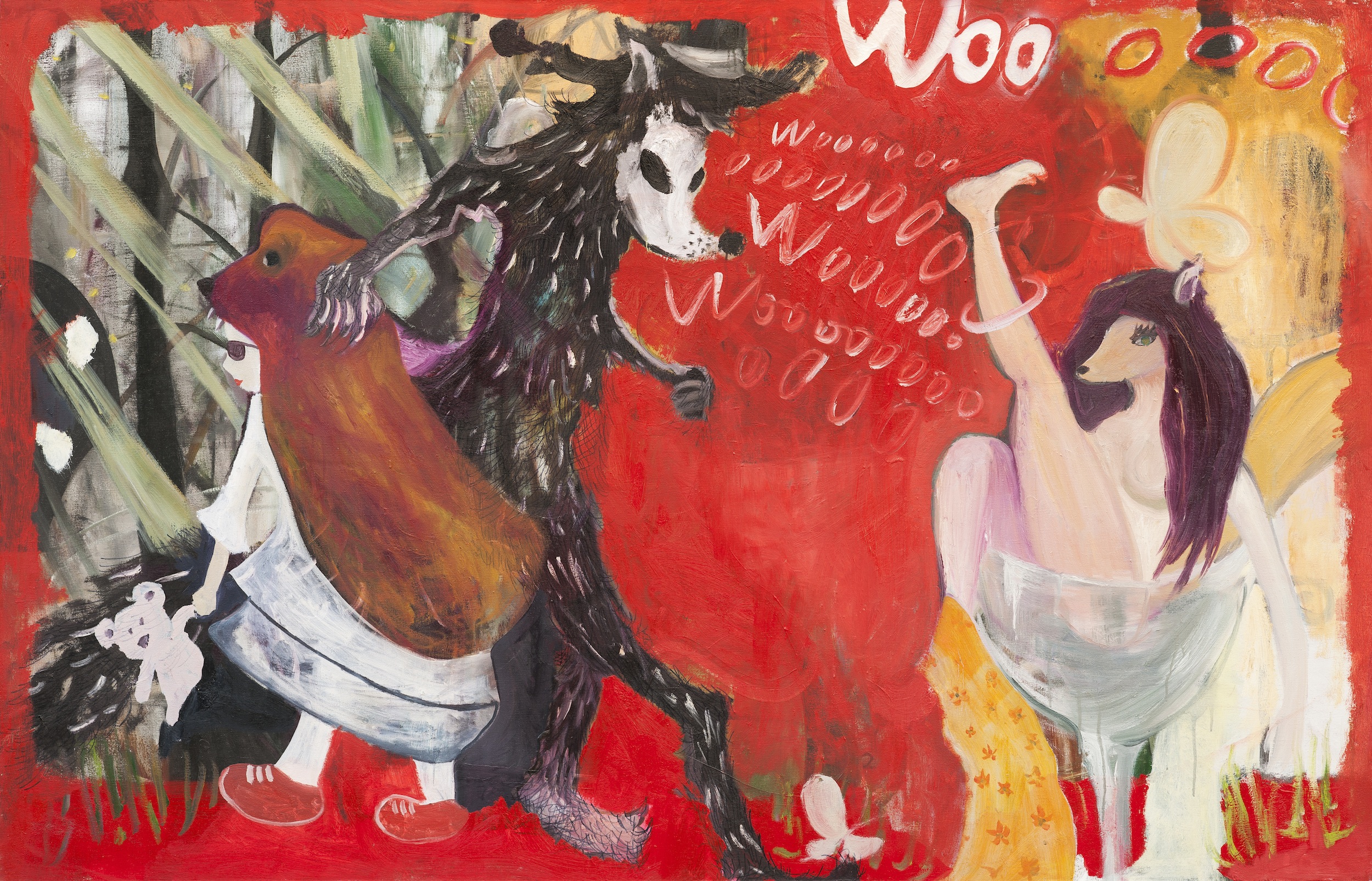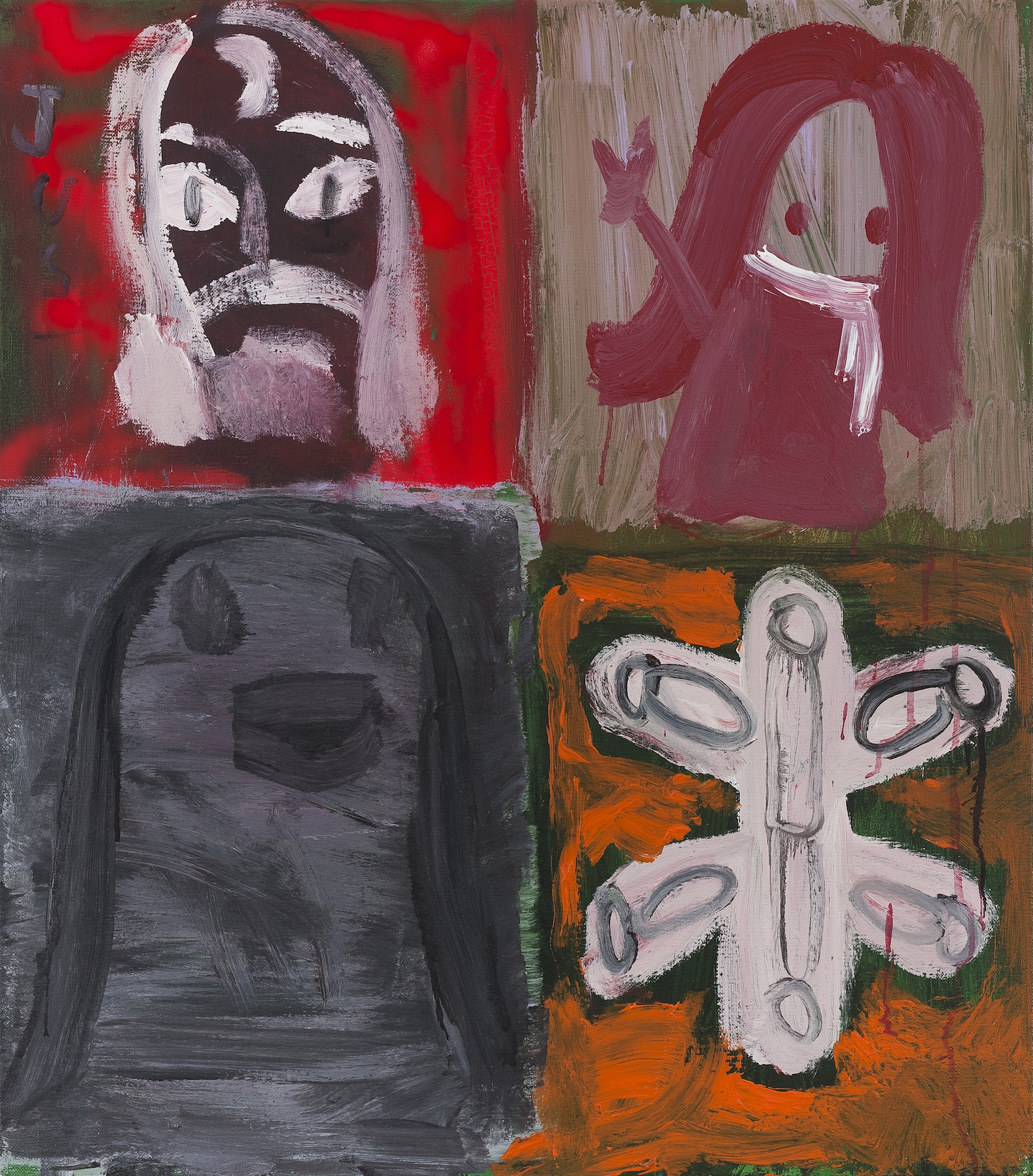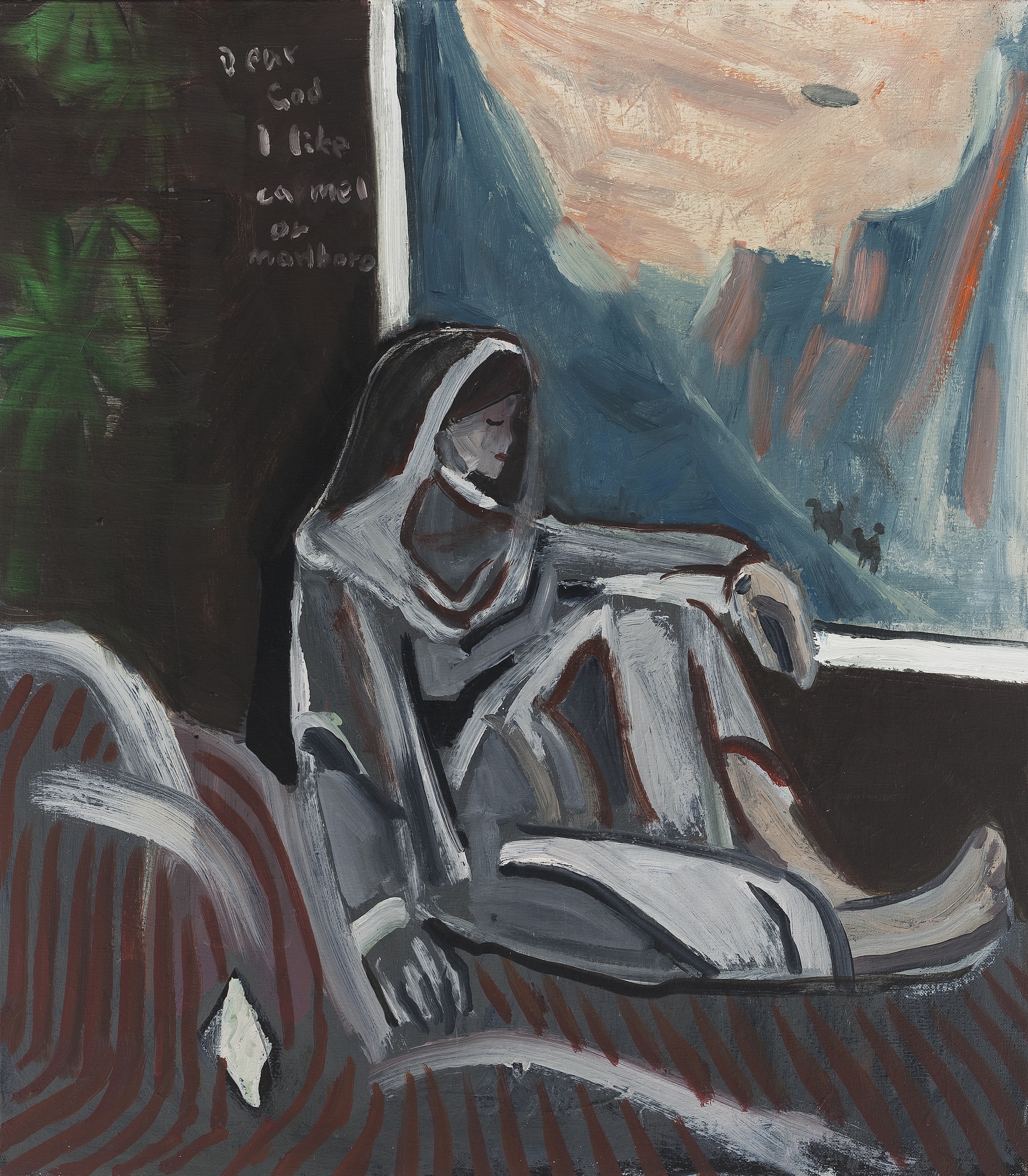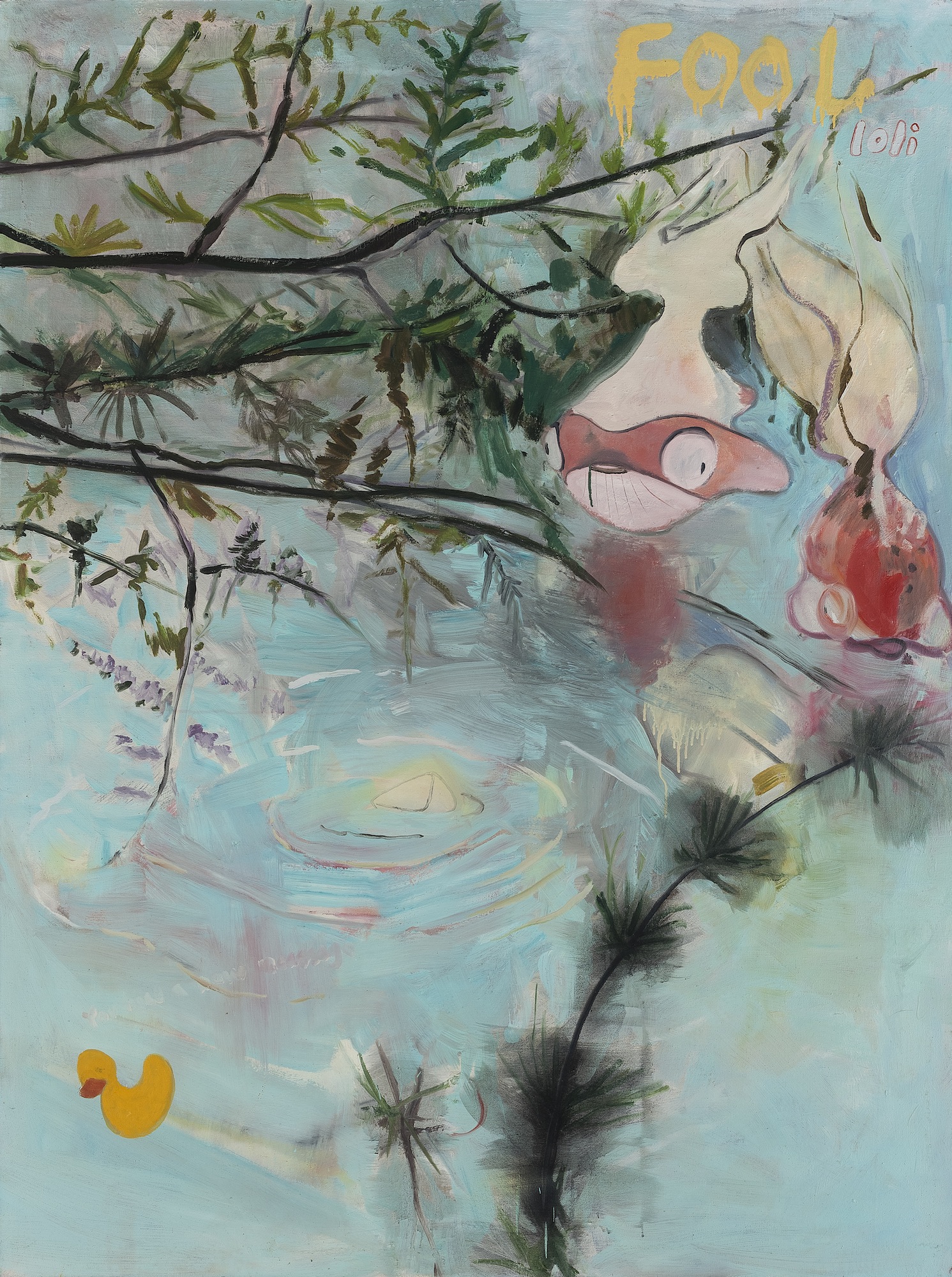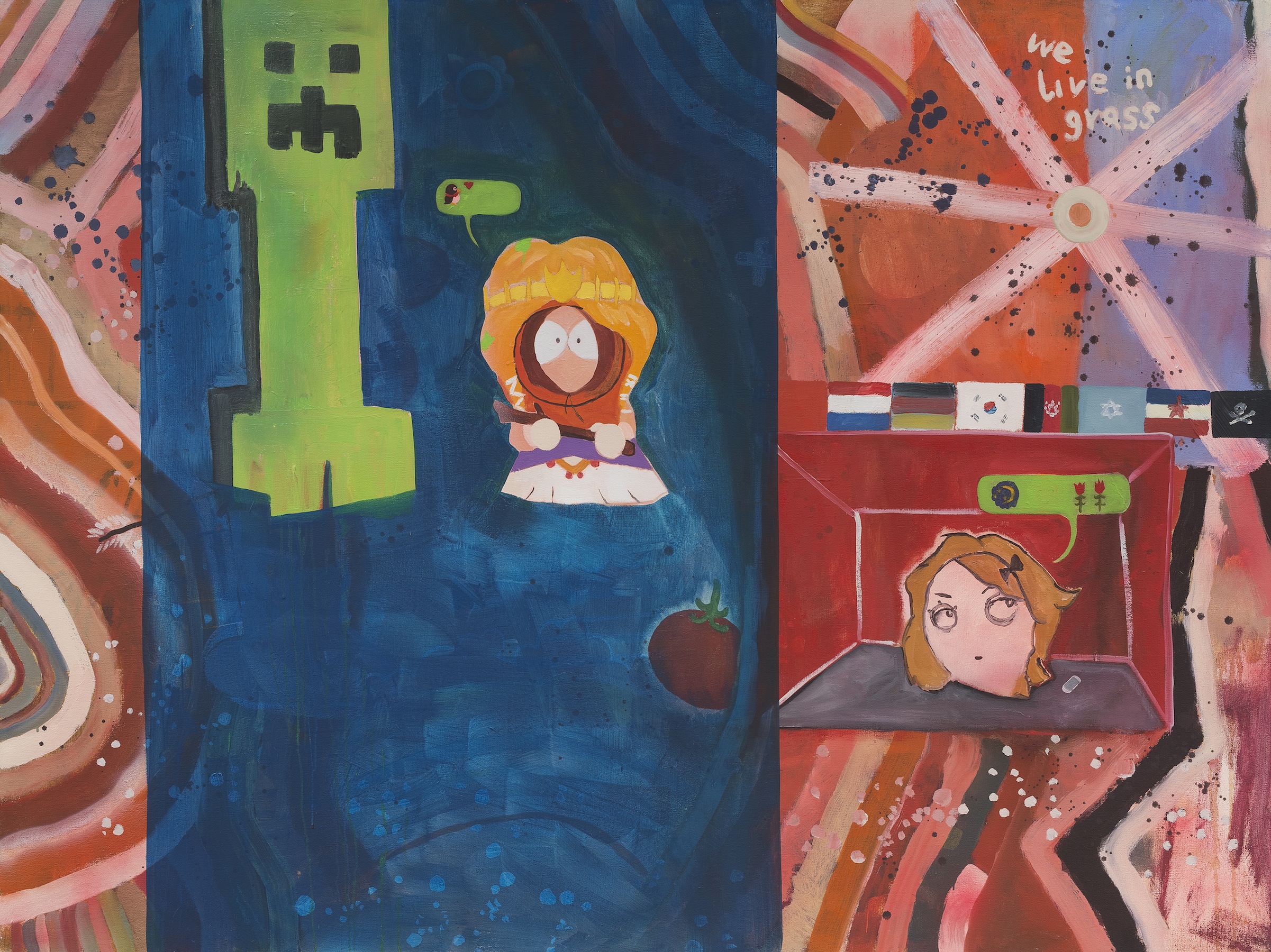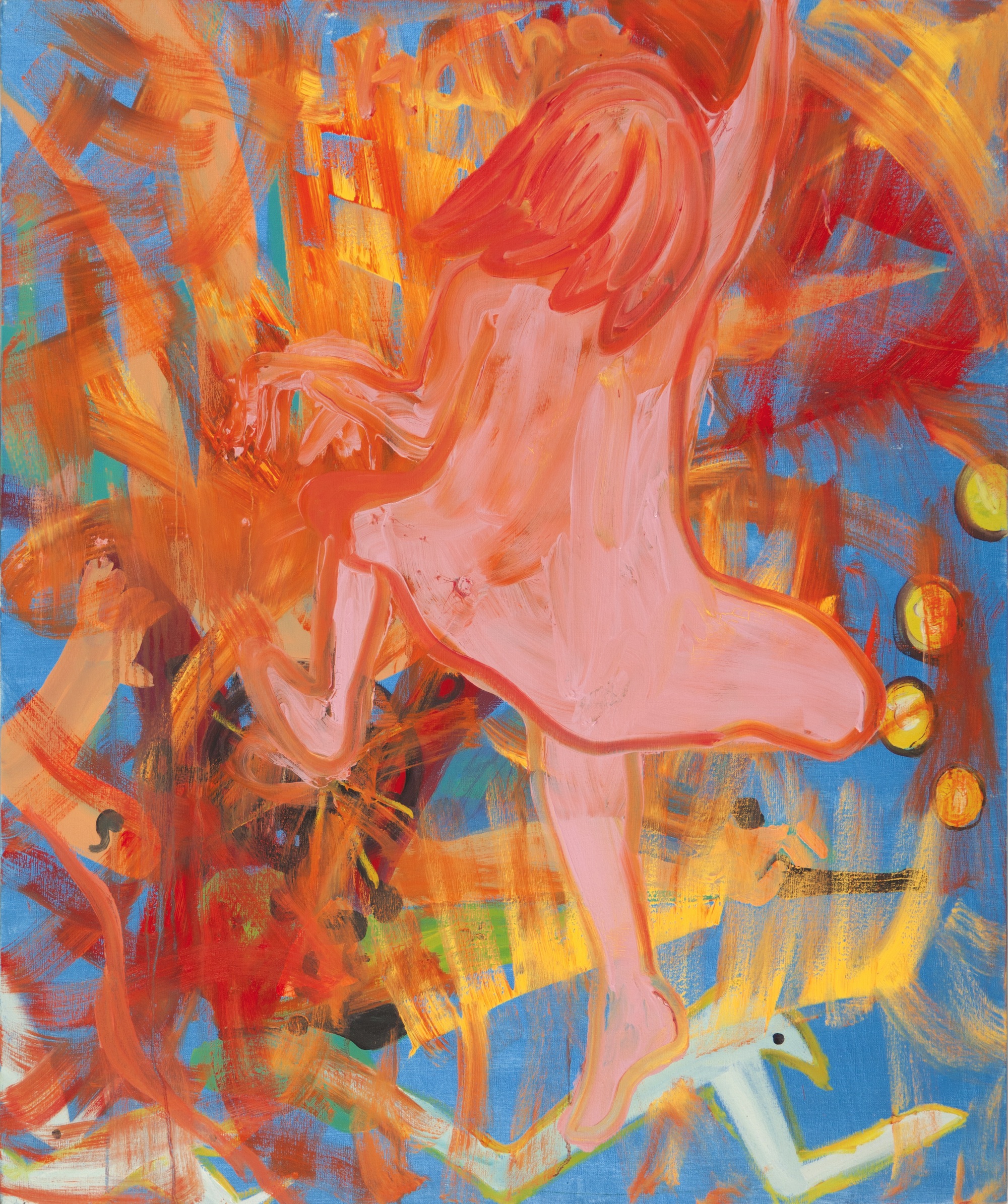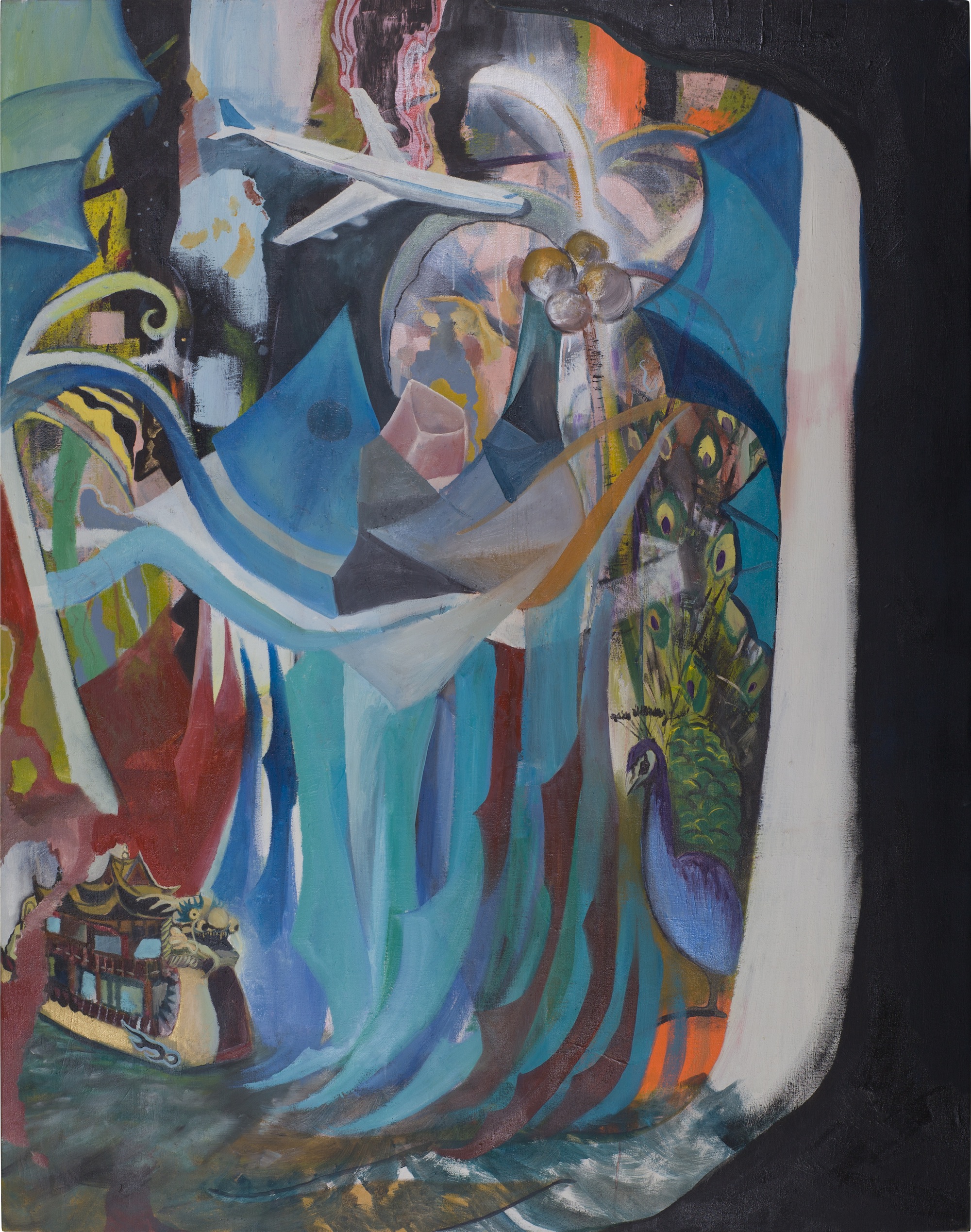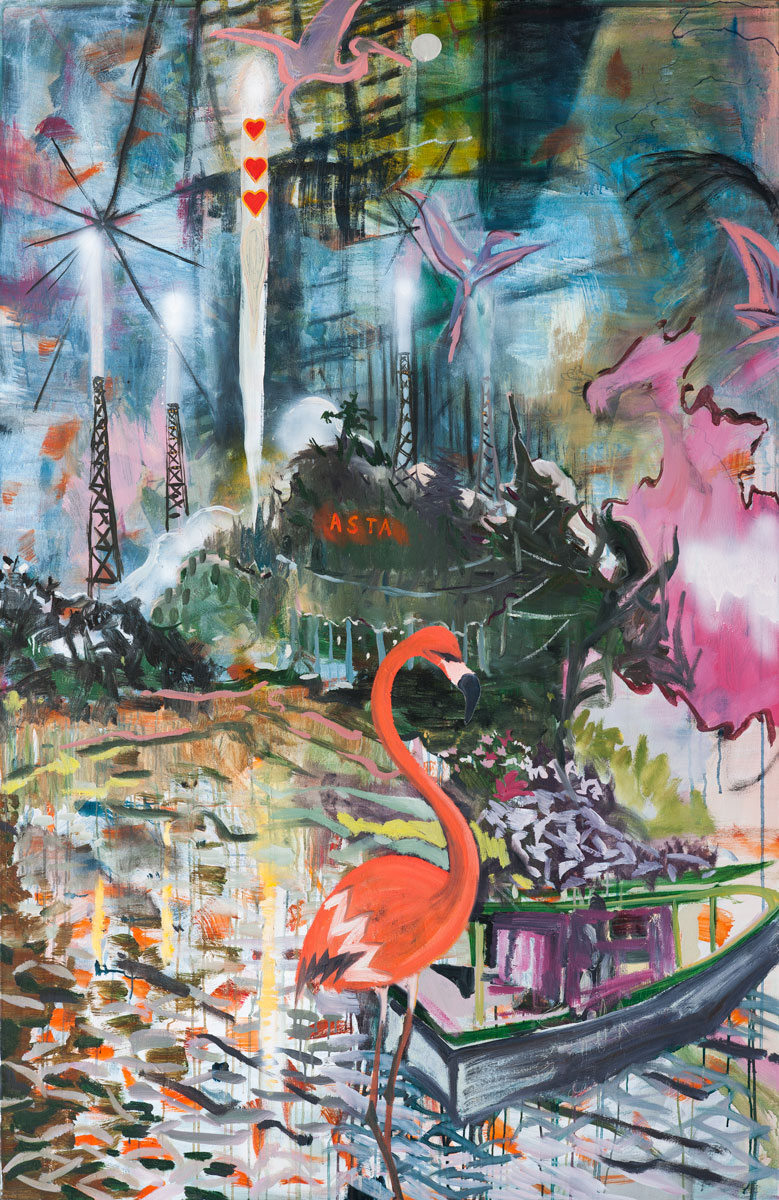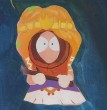- 资质:艺
- 评分:
1分 2分 3分 4分 5分 6分 7分 8分 9分 10分 1分
- 印象:
- 经营时间:15年
- 展厅面积:300平米
- 地 区:北京-朝阳
少年请留步_李泉山个展
- 展览时间:2015-10-17 - 2015-12-18
- 展览城市:北京-朝阳
- 展览地点:NUOART
- 策 展 人:许晟
- 参展人员:
展览介绍
编织传奇的少年
——关于李泉山的“少年请留步”系列
许晟
当观众看到李泉山的作品,常常会问的问题就是,这幅画讲的什么,或者为什么要这么画?其实自古以来,每当人们看到新鲜的艺术品,都会问这样的问题;而当代艺术里的新鲜作品层出不穷,这样的问题就几乎成为了习惯。
看上去,在意识形态上,李泉山的作品对新绘画没有任何可供说明的继承或贡献,他似乎也不准备以此为自己画画的目标。在中国当代艺术界,绘画并不像在70年代的欧美那样遭到排斥;相反,绘画延续了延安文艺座谈会的“服务”逻辑,在工具理性主义的框架内,被赋予了各种各样的功能:例如服务社会学的功能,服务艺术史的短期断代及组建群体的功能,服务观念表述的功能,或者更直接的,服务艺术市场的功能。这样看来,李泉山的绘画没有任何服务的对象,他的作品是真正“无用”的。他只是在记录生活的酸甜苦辣和过眼云烟所带来的,转瞬即逝的灵感闪光;而有一天,生活在这个时代,或者了解这个时代的人们会发现,他画布里的故事竟然也与自己有关。
李泉山不善言辞,谈论自己的绘画时有些笨拙,但却是真正直接而开放的。例如“火箭科学”(2014)这幅画,据他说,灵感就来自他看到的一幅火箭发射场的照片。照片近景是一片湖泊,有船和白鹭,远处则是高耸的发射架。他觉得这幅照片充满了现代人的诗意和传奇意味,就想把它重新描绘下来。绘画自然是不受约束的,所以他把近景的船改成了几何图形,然后彻底模糊了中景和近景的界限,让远处的发射架显得无限遥远,却又近在眼前。白鹭被他改成了火烈鸟,因为在他的眼里,和在画面的逻辑里,一切靠近发射架的飞禽都染上了火箭的气息,并且是可以一飞冲天的。火烈鸟也许不是飞得最高的鸟,却具备这样的情绪。也许这样的修改有点天马行空,但与发射架那充满了蒸汽朋克风格的“新造型”相比,这也算不了什么了。
说到蒸汽朋克,李泉山还很喜欢摇滚乐。一旦谈论摇滚乐,他滔滔不绝地说出的那些乐队和歌手,笔者即使借助“百度”也无法得知。但他绝不是一位摇滚青年,因为首先,他只会演奏最简单的电子琴;其次,他的性格是温和而平静的——至少表面看起来如此。当他拿起画笔的时候,无论脑海里掠过多么荒诞的想法,笔者也不会再惊奇,只是愿意也沉迷其中,哪怕是一小会儿。比如“学学狼叫”(2013)这幅画,他说是来自小红帽和大灰狼的故事。左边,一个披着熊皮的女孩带着事不关己的态度走开了,或者是被大灰狼用手给赶走的?它此刻关心的是坐在大号酒杯里,无比性感的一只母狼?从母狼腿部的线条和皮肤来看,也许是一位人类女士伪装的更合理?不然何必要学狼叫呢?她是为了救小红帽才出此计策的吧?接下来会怎样呢?总是这个场面本身就够荒诞了,甚至由荒诞而诞生出某种美好的情绪。这张画里有种奇怪的,混杂着对女性 的赞美,恶作剧,和英雄主义的幽默;正如李泉山所说的,“就是那种必须无厘头一点才可以解决问题的感觉。”
“办正事还是找乐子”这幅画的灵感来自“唐人传奇”里的“熊代少女”一文。故事大致是说,唐朝某地的封王去打猎,在野地里发现一只箱子,叫随从打开来看,里面竟然装着位面容姣好的女子。一问才知道,她是被两个没良心的恶和尚绑架,暂时藏在这里的。大王把女子带走,换了只活着的熊装进箱子。傍晚,和尚果然赶来,把箱子抬回客栈房间,说是要做法事。结果,第二天清早,据店小二说,一只熊夺门而出,逃回山林了。房间就剩下一堆人骨。这位封王真是做好事不留名,不仅大快人心,也充满了唐人的爽朗,和古朴的恶趣味。李泉山的绘画绝对不是给这则故事画插图的,他的画面更像是传奇,童话,以及他独有的视觉音律的混合。画作标题就像给故事取了个新名字,意思大概是,这位封王究竟是在为民除害办正事,还是在恶作剧找乐子?笔者总认为,他的绘画与唐人传奇的联系并非偶然,唐人传奇也像是那时候成年人的童话。传奇中的奇幻与荒诞,也混淆了前朝的传说和对未来的想象,用一篇篇天马行空的故事,代表了一个时代的生活与思潮。李泉山的绘画也是如此,就像是混杂了当代人的现实,理想,情感,和各种胡思乱想的视觉传奇。
李泉山愿意讲述每幅画里的线索;或者,当我们了解了这样的结构,就可以信任其灵感与线索的丰富,以及精神上的真正自由,藉此享受到解读的快感,并沉迷于这些视觉化的传奇本身。他绘画的色彩和造型存在着浓重的卡通因素,但有趣的是,无论在欧美或日本的大量卡通甚至波普艺术中,都难以找到类似的绘画方法。如果说,卡通艺术通常是对卡通元素的引用,并借助“扁平化”的观念使这种引用成立,那么李泉山就更像是在直接使用卡通的逻辑本质:制造一种源于当代生活的,将抽象的体验具象化的情感图像。
今天,卡通早已成为一种文化现象,并因为其显而易见的虚无而成为了可靠的精神慰籍。从社交软件的表情符号到影像艺术,它充满了各类视觉空间。艺术家对待它的态度也在不断发生变化。当代卡通艺术与卡通的最大不同,就是常常借助“引用”而表现反讽的意味,例如村上隆:他讽刺卡通的虚无和自己所做的一切,以至于他作为“反讽者”的“真实身份”只存在于自己的诉说当中了。但在最广阔的视角中,他的观念结构依然是成立的。与之相反,奈良美智承认卡通的温暖是真实有效的,赞许它对情感表达的有效性,并试图将其与更高层面的精神表达相联系。当然,那类认为卡通是“幼稚的”或者“八零后”的精神代名词的观点,和那些恰好能够证明此观点的各类作品一样,在严肃的艺术讨论中,从一开始就是无法存在的。
从这个层面来看,在对待卡通的创作逻辑上,李泉山与奈良美智是相似的:他们拒绝抽离自己作为艺术家的身份,也拒绝作为卡通的临摹者和观察者而创作,而是作为卡通类图像的直接创造者而创作。区别在于,奈良美智和许多日本艺术家一样,直接使用了卡通的视觉和情感原则;而李泉山走上了一条不同于前人的道路,他继续以绘画性为根基,努力探索属于自己的叙事和视觉结构。或者说,在李泉山的创作结构里,卡通既不是作为反讽对象而存在的文化现象,也不是作为情感载体而存在的视觉风格;他对卡通采取了一种中立的态度,将其作为一种可以随时使用或放弃的视觉素材。在绘画的逻辑中,这符合李泉山传奇化的叙事结构:在当代的精神生活中,卡通不是需要讨论的对象,而是一种存在层面的既定现实,和共有记忆所带来的精神状态。如果说,传奇的叙事需要将抽象的时代体验变成故事;那么,卡通元素则更容易将抽象的生活变成可以看见的“某种样貌”。有的时候,李泉山似乎在生活和编织传奇的过程中找到了适合某个故事的“样貌”;而有时候,他从卡通的“样貌”里看到了生活。因此,与很多画家不同,李泉山作品的可辨识性绝不是基于任何重复出现的卡通符号,而是他基于绘画语言的,视觉及叙事结构的独特性。
显然,“卡通”绝不能概括李泉山的绘画风格;他的绘画还与表现主义接近,但也绝对不是表现主义绘画,因为他的作品不准备成为人间和天堂之间的桥梁,启迪观众的神性;他的作品是朴实而直白的,甚至有些天真,担负不起表现主义的重任。他的绘画类似涂鸦,但也绝对不是涂鸦;涂鸦是一种立场,一种不愿欣赏也必须接受的事实;而他的绘画是娓娓道来的,需要阅读和想象。他的绘画也绝对不属于超现实主义,超现实群体要颠覆整个世界的秩序,而他正相反,他总是能看见现实中的无限美好,或者无限糟糕。他的作品更不是“坏画”,除开那些希望跻身“坏画”行列的,真的画不出一张好画的艺术家之外,“坏画”群体自己都无法定义自己,只能对绘画报以最大程度的信赖和嘲讽;而李泉山的作品没有丝毫嘲讽的意味,他也从不站在绘画之外,审视“绘画”这个整体。不仅如此,他的作品与观念艺术也没有关系,观念本来就与绘画无关,只有思考和修养与绘画有关。当然,他也没有用观念来掩盖绘画能力的缺陷,但这也仅仅说明,李泉山是一位真正的画家。
他几乎是精确地避开了所有当代新绘画的常见元素和索求;在极严苛的标准里,依旧保持了个人化的创作和独立的姿态。这种“精确”有无数种可能,而李泉山终于让我们看见了其中的一个。这来自他的个性与自信,和对当代艺术的种种乱象无所谓的态度——而这种无所谓则来自他对绘画的极度专注与真诚。因此,在严格的形而上层面,李泉山依然是作为一个自由的个体而存在的。无所需求,无所畏惧,直到在画布里建起一座属于自己的传奇王国,这是当代绘画最需要的力量。
A Young Man Weaving His Legends
-About Li Quanshan’s “Don’t walk away,young man” series
Xu Sheng
When the audience catches sight of Li Quanshan’s works, the common question asked is what this painting conveys, or why the painting is drawn like this? As a matter of fact, whenever observe fresh artwork, people would ask such a question since ancient times; moreover fresh works in contemporary art emerge in endlessly, thus people almost get used to this kind of questions naturally.
As for new painting, it seems that Li Quanshan’s works have no any inheritance or contribution which is available to explain in the ideology, as if he does not get ready for his own painting goal on this. In China contemporary art circles, the painting is not such rejected as the European and American ones in the 1970s; on the contrary, the painting continues the “service” logic of the Yan'an Forum on Literature and Air and is given a variety of functions within the instrumental rationalistic framework: such as service functions for sociology, for short-term dating and formation community of art history, for concept presentation or more directly service function for art market. In this way, Li Quanshan’s works are really “useless”, his painting has no other service object but to record a fleeting flash inspiration brought about by ups and downs and superficial things just like passing clouds in life; however one day the people live in or understand this day and age will find that the stories in his painting works are also related to themselves surprisingly.
Li Quanshan is not good at the talkative, even is somewhat awkward talking about his own painting, but is really direct and open. Taking “Rocket science” (2014) this painting as an example, he said that the inspiration came from a photo of a rocket launch site he saw. The close shot of the photo is a lake, there are boats and egrets on the lake and a launcher towers in the distance. He felt that the photo is full of sapiens poetry and legendary significance and wanted to refigure it at once, while painting is unconstrained naturally, so the boats were changed into the geometry in the close shot, then the boundary between the medium shot and the close shot was completely blurred. So that the distant launcher looks like infinitely remote, yet is also close at hand. The egrets were changed into the flamingos, because all of the birds which were close to the launcher were all dyed the rocket atmosphere in his eyes and the graphic logic and can soar up into the sky with one start. Maybe flamingos can not fly the maximum among birds but have such emotions. Perhaps this modification is unrestrained a little, but it is nothing in comparison with the “novel style” of the launcher which is full of steampunk.
Speaking of steampunk, Li Quanshan still is keen on rock and roll. Once the talking about rock music, he just utters those bands and singers in a jet, all of which the author can not learn about even though in virtue of “Baidu”. Nevertheless he is by no means a rock youth, because first of all he plays nothing but the simplest electronic organ; for another his character is gentle and calm - it appears seemingly so at least. When he picks up the paintbrush, no matter what absurd idea skims over mind, the author will not be surprised once more for no other reason than that willingness indulge thereinto even for a little while. For example, “Learning the howl of the wolf” (2013), he said that this painting stemmed from the story of Little Red Riding Hood and Grey Wolf. On the left, a girl dressed in bearskin shows up an attitude having nothing to do with her or maybe is driven away manually by the grey wolf? Because the grey wolf maybe is concerned an incomparably sexy she-wolf sitting in a large wine glass at the moment? From the lines and the skin of the she-wolf legs, perhaps it is a more rational that the she-wolf is disguised by a human lady? Otherwise, why is the wolf’s wow imitated? Maybe she uses this plan in order to save the little red riding hood? Followed by what will happen? In a word, this scene is absurd enough in itself and even a certain good mood is born from the absurd. There is a strange mischief mixed with praise to women and a humor of heroism in this painting; exactly as what Li Quanshan said, “It is just that feel which can only solve the problem you must be nonsense a bit”.
“Proper business or having fun”, this painting is inspired by the article, “Change the girl for a bear ” from the “Legends in the time of the Tang Dynasty”. The story line is that the King conferred somewhere in Tang Dynasty found a box in the wild during his hunting, ordered his followers to open it, turned out to be a beautiful and charming woman loaded up. Only by question did he know that the woman was kidnapped by two heartless evil monks and hidden temporarily here. Then the King took the woman away and a live bear was packed into the box instead of the woman. At nightfall the monks arrived as expected and carried the box back to the inn room, saying to do a Buddhist memorial service. At last, in the next morning the waiter said that a bear ran for the door out and fled to the mountains. A pile of human bones was left in that room. The King really isn’t leave his name behind doing good, is not only uplifting, but also full of the Chinese hearty and quaint bad taste. Li Quanshan’s painting is definitely not drawing illustrations for this story, and his tableaus look more like a legend or a fairy tale mixing with his unique visual rhyming. Just like the title of the paintings takes a new name for the story, probably meaning that the King conferred either got rid of the evils for the people doing good or looked for fun in mischief any way? The author always believes that his paintings relate with “Tang people legend” by no accident, the latter also seems like the fairy tale for adults in that time. Fantasy and absurdity in legends also mixed with tale in the ancient dynasty and imagination for the future representing life and ideological trend over an era with fanciful stories one by one. Likewise Li Quanshan’s paintings as though contemporary reality, ideals, emotions and various cranky visual legendary are mixed.
Li Quanshan would like to narrate clues in each painting; or we can trust his abundant inspirations and clues and true freedom spiritually as soon as we understand such structures, thereby enjoying the pleasure of interpretation and indulging in these visual legends themselves. Though there are a strong cartoon factor in colors and shapes of his paintings, what’s funny is that it is difficult to find a similar painting method in both a large number of cartoons and even pop art regardless of Europe and America or Japan. If the cartoon art is usually a quote to the cartoon elements, and with the help of the “flattening” concept this quote comes into existence, then Li Quanshan seems more like to create an emotional image of nonrepresentational experience concretization derived from contemporary life directly by logical essence of cartoon.
Today, the cartoon already becomes a cultural phenomenon and furthermore a reliable spiritual comfort because of its noticeable nothingness. All kinds of visual spaces are full of the cartoon from emoticons in social contact software to video art. The artists’ attitudes towards it are also constantly changing. The maximal difference between the contemporary cartoon art and the cartoon is exactly often that the ironical implication is performed by means of the “quote”. Such as Takashi Murakami, he satirizes nothingness of cartoons and everything he has done, so that he as “real identity” of “ironist” exists only in his own telling. But his ideological structure is still tenable in the broadest perspectives. In contrast, Yoshitomo Nara admits the cartoon warmth is real and effective, then praises the effectiveness of the cartoon to emotional expression and tries to be associated with a higher level of spiritual expression. Of course, that kind of viewpoint the cartoon is regarded as the spirit synonym of “the naive” or “the youth after 1980s”, same as all kinds of works which happen to be able to prove this point of view, they can not exist from the outset in serious art discussion.
In terms of dealing with the cartoon creation logic from this level, Li Quanshan and Yoshitomo Nara are similar: although they all refuse to pull away as the status of the artist and also reject to create as a cartoon imitator and observer, they create as a direct creator of cartoon class image. Their difference is that Yoshitomo Nara is the same as many Japanese artists, directly uses visual and emotional principles of cartoons; while Li Quanshan embarks on a path different from predecessors and continues to explore industriously narrative and visual structures belonging to his own with painterliness as the foundation. Or other, the cartoon exists in neither a cultural phenomenon as ironic object nor a visual style as emotional carrier in the Li Quanshan’s creation structure; he takes a neutral attitude to the cartoon, considers the cartoon as a visual material can be used or abandoned at any time. In the pictorial logic, this accords with Li Quanshan’s romanticized narrative structure: In the contemporary spiritual life, the cartoon is not the object to be discussed, but is an established reality of existing level and a mental state brought about by common memories. If the legendary narration needs to adapt the nonrepresentational era experience into story, cartoon elements adapt more easily the nonrepresentational life into “some kind of appearance” in visible. Sometimes, Li Quanshan seemingly finds the “appearance” suitable for a story in the process of the life and the weaving legend; while sometimes, he digs the life from the “appearance” of the cartoon. Consequently, different from a lot of painters, the identifiability of Li Quanshan’s works is never based on any cartoon symbol recurred, but his painting language and unique visual and narrative structures.
Obviously, in no way can the “cartoon” summarize Li Quanshan’s painting style; his paintings also close to expressionism, but are definitely not the expressionist paintings, because his works are not ready to become a bridge between earth and heaven, so as to enlighten the audience’s godhead; his works are simple and straightforward, even somewhat naive, can not afford the heavy responsibility of the expressionism. His painting is similar to graffiti, but definitely not graffiti; since the graffiti is a standpoint and a fact you are reluctant to appreciate and also have to accept; however his paintings lively describe little by little, need to read and imagine. On no account can his paintings belong to surrealism, because surreal population wants to subvert the order all over the world, but on the contrary, he is always able to explore infinitely wonderful or infinitely worse in the reality. What’s more, his works are the “bad painting” that are out of the question at all, because apart from those artists who wish to rank among the “bad painting” and really can not draw a good painting, all of the “bad painting” population can not define themselves, can only give trust and ridicule for the painting at the greatest extent; while there is not the least sarcastic meaning in LI Quan-shan’s works, he also never stands on the painting outside to survey this whole “painting”. More than that his works are not related to the conceptual art and further the concept has nothing to do with the painting essentially, only reflection and accomplishment are connected with the painting. Without doubt, he also does not cover up the defect in the drawing ability with the concept, but it is precisely shown that LI Quan-shan is an authentic artist.
He almost keeps away from accurately all of the common elements and demands in contemporary new painting; he still holds the personalized creative works and the independent posture in a highly stringent standard. Notwithstanding there are countless possibilities in this type of the “exactitude”, Li Quanshan lets us enjoy one of them in the end. This achievement comes from his personality, self-confidence and dauntless attitude for all sorts of chaotic phenomena in contemporary art – as well as such dauntless attitude stems from his extreme concentration and sincerity on the painting. As a result, Li Quanshan is still in existence as a free individual in the strict metaphysical level. He is wantless and fearless until his own legendary kingdom is built in his canvas, which is the most necessary power in the contemporary painting.
李泉山绘画的色彩和造型存在着浓重的卡通因素,但有趣的是,无论在欧美或日本的大量卡通甚至波普艺术中,都难以找到类似的绘画方法,李泉山更像是在直接使用卡通的逻辑本质:制造一种源于当代生活的,将抽象的体验具象化的情感图像。当我们了解了这样的结构,就可以信任其灵感与线索的丰富,以及精神上的真正自由,藉此享受到解读的快感,并沉迷于这些视觉化的传奇本身。他的绘画是娓娓道来的,需要阅读和想象。他的绘画也绝对不属于超现实主义,超现实群体要颠覆整个世界的秩序,而他正相反,他总是能看见现实中的无限美好,或者无限糟糕。他几乎是精确地避开了所有当代新绘画的常见元素和索求;在极严苛的标准里,依旧保持了个人化的创作和独立的姿态。这来自他的个性与自信,和对当代艺术的种种乱象无所谓的态度——而这种无所谓则来自他对绘画的极度专注与真诚。无所需求,无所畏惧,直到在画布里建起一座属于自己的传奇王国,这是当代绘画最需要的力量。

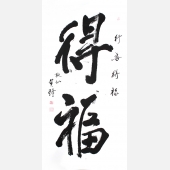 黄琦
黄琦 测试用艺术
测试用艺术